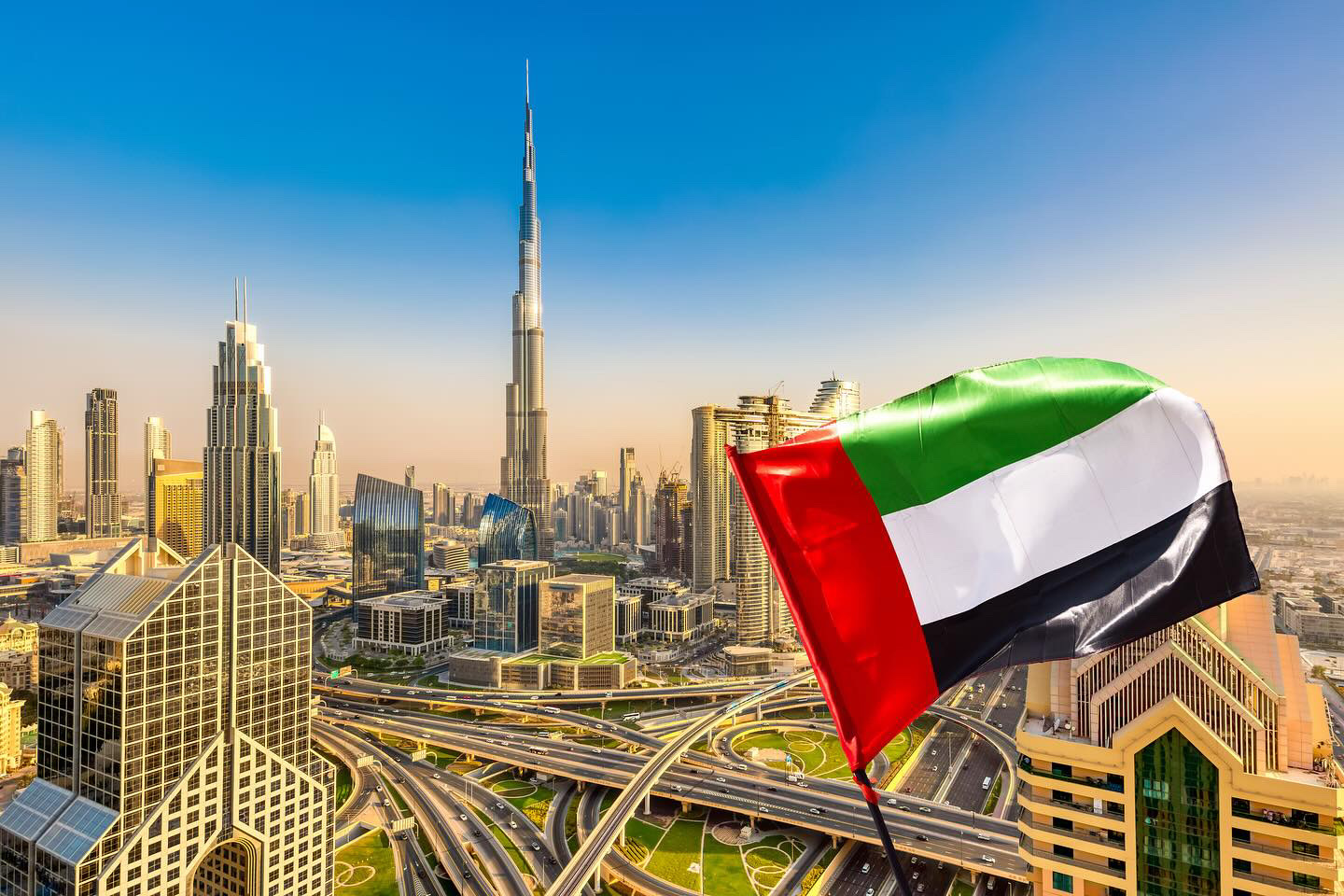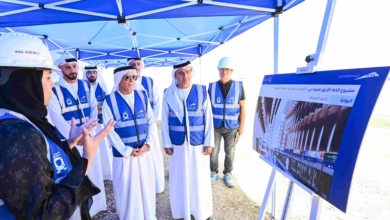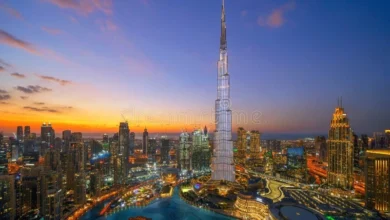
Blending Traditions with Innovation: The Architectural Evolution of the United Arab Emirates
The United Arab Emirates (UAE) is renowned for its opulent and modern architecture that stands in stark contrast to its rich historical and cultural heritage. Nestled in the Arabian Peninsula, the UAE is a melting pot of influences, resulting in a unique architectural landscape that combines Islamic, Bedouin, colonial, and contemporary design elements.
The architectural marvels of the UAE are not only a testament to the country’s rapid development and economic success but also a reflection of its ambition to push boundaries and redefine what is possible in construction and design. From the iconic Burj Khalifa to the serene Sheikh Zayed Grand Mosque, the UAE’s architectural wonders have captivated the world’s attention and become symbols of the nation’s progress.
However, the UAE’s architecture is not solely defined by grandeur and extravagance. The country is also at the forefront of sustainable design, with groundbreaking projects like Masdar City and Dubai Sustainable City leading the way in creating environmentally friendly and energy-efficient communities.
In this article, we will explore the diverse architectural landscape of the United Arab Emirates, delving into the historical influences that have shaped its design aesthetic, examining the modern architectural marvels that have become global landmarks, and highlighting the country’s commitment to sustainable architecture. By the end, you will gain a deeper understanding of how the UAE has become a hub of architectural innovation and a global leader in both traditional and contemporary design.
Historical Influences
The architecture of the United Arab Emirates is a reflection of its rich history and diverse cultural influences. Over the centuries, various civilizations and traditions have left their mark on the architectural landscape of this region, shaping its unique and captivating style.
Islamic Architecture
Islamic architecture has played a significant role in shaping the architectural heritage of the United Arab Emirates. With its roots in the Islamic faith, this style is characterized by its emphasis on geometric patterns, intricate calligraphy, and the use of ornate decorations. The UAE is home to numerous mosques that showcase the beauty and grandeur of Islamic architecture.
One notable example is the Sheikh Zayed Grand Mosque in Abu Dhabi. This architectural masterpiece not only serves as a place of worship but also as a symbol of the country’s cultural identity. With its stunning white marble domes, intricate floral patterns, and soaring minarets, the mosque stands as a testament to the Islamic architectural traditions.
Bedouin and Nomadic Traditions
Before the advent of modern cities, nomadic Bedouin tribes roamed the deserts of the United Arab Emirates. Their way of life and cultural practices have had a profound influence on the region’s architectural style. The traditional Bedouin architecture was designed to withstand the harsh desert climate while providing a functional and practical living space.
The use of natural materials such as palm fronds, mud, and stone, along with the incorporation of wind towers, helped regulate the temperature inside the structures. The design of these traditional dwellings reflects the Bedouin’s deep connection to the land and their nomadic lifestyle.
Colonial Influence
The United Arab Emirates has also been influenced by colonial powers, particularly the British, who played a significant role in the region’s development. The influence of British colonial architecture can be seen in the design of government buildings, palaces, and other structures.
The British colonial architecture often features a combination of European and Arab elements, creating a unique blend of styles. This architectural fusion is characterized by the use of arches, domes, and ornate facades, which add a touch of grandeur and elegance to the buildings.
The historical influences on the architecture of the United Arab Emirates have contributed to its diverse and captivating style. From the grand mosques inspired by Islamic traditions to the practical designs of the Bedouin tribes and the colonial architectural fusion, each element tells a story of the country’s rich cultural heritage. These influences have paved the way for the modern architectural marvels that have become synonymous with the UAE’s skyline.
Modern Architectural Marvels
The United Arab Emirates (UAE) is renowned for its modern architectural marvels that have redefined the skylines of its cities. With a vision to create groundbreaking structures that showcase the nation’s progress and ambition, the UAE has become a global hub for architectural innovation. In this section, we will explore some of the most iconic modern architectural marvels in the UAE.
Burj Khalifa
No exploration of modern architecture in the UAE would be complete without mentioning the Burj Khalifa. Standing at a staggering height of 828 meters, it is the tallest building in the world. Designed by the renowned architectural firm, Skidmore, Owings & Merrill, the Burj Khalifa is a symbol of the UAE’s ambition and engineering prowess. Its sleek and futuristic design, inspired by a desert flower, features a combination of Islamic art and modern aesthetics. The Burj Khalifa offers breathtaking views of Dubai’s skyline and has become a global icon of architectural excellence.
Sheikh Zayed Grand Mosque
The Sheikh Zayed Grand Mosque in Abu Dhabi is a masterpiece of Islamic architecture. It is one of the largest mosques in the world, capable of accommodating over 40,000 worshippers. The mosque’s design draws inspiration from various architectural styles, combining elements of Persian, Mughal, and Moorish traditions. Its pure white exterior, adorned with intricate floral patterns and calligraphy, creates a serene and awe-inspiring atmosphere. The Sheikh Zayed Grand Mosque is not only a place of worship but also a symbol of cultural diversity and religious tolerance in the UAE.
Louvre Abu Dhabi
The Louvre Abu Dhabi is a groundbreaking cultural project that showcases the UAE’s commitment to arts and heritage. Designed by the renowned architect Jean Nouvel, the museum’s unique structure is a fusion of modern design and traditional Arabic architecture. The building’s iconic dome, made up of thousands of interlocking geometric patterns, creates a mesmerizing play of light and shadows. The Louvre Abu Dhabi houses an extensive collection of art and artifacts from around the world, bridging cultures and promoting dialogue through artistic expression.
These modern architectural marvels in the UAE reflect the country’s ambition to push boundaries and create structures that inspire awe and admiration. By combining innovative design with cultural influences, the UAE has successfully created landmarks that have become synonymous with the nation’s identity.
Sustainable Architecture
As the United Arab Emirates continues to evolve and grow, it has placed a strong emphasis on sustainable development and eco-friendly practices. Recognizing the importance of preserving the environment for future generations, the UAE has implemented various sustainable architectural projects that showcase their commitment to sustainability.
Masdar City
One of the most notable examples of sustainable architecture in the UAE is Masdar City. Located in Abu Dhabi, Masdar City is a futuristic development that aims to be one of the world’s most sustainable urban communities. Designed to be carbon-neutral and zero-waste, this city of the future utilizes cutting-edge technologies and innovative design principles to minimize its environmental impact.
Masdar City is powered by renewable energy sources, primarily solar energy, making it a shining example of clean energy use in urban settings. The city employs advanced building techniques, such as passive cooling systems, to reduce energy consumption. Additionally, it incorporates extensive green spaces and promotes sustainable transportation options, including a personal rapid transit system and electric vehicle charging stations.
The Sustainable City
Another remarkable sustainable architectural project in the UAE is The Sustainable City, located in Dubai. This development is designed to be a blueprint for a sustainable community, focusing on environmentally friendly living and promoting a green lifestyle.
The Sustainable City prioritizes energy efficiency, utilizing solar panels to generate electricity and employing smart grid systems to optimize energy consumption. Additionally, the community is built around a central green spine, with parks, gardens, and open spaces, allowing residents to connect with nature while reducing the urban heat island effect.
The development also incorporates urban farming, with community gardens and rooftop farms, promoting sustainable food production and reducing the carbon footprint associated with food transportation. Furthermore, The Sustainable City encourages the use of electric vehicles and provides charging infrastructure to support sustainable transportation.
Dubai Sustainable City
Dubai, known for its grand architectural projects, has also taken significant steps towards sustainable development. Dubai Sustainable City is a groundbreaking initiative that aims to create a fully sustainable community within the city.
The development incorporates various sustainable features, such as energy-efficient buildings, renewable energy generation, and waste management systems. It also focuses on water conservation through smart irrigation systems and wastewater treatment facilities. The community promotes sustainable transportation options, including electric vehicles and dedicated cycling paths, reducing reliance on traditional fossil fuel-based transportation.
Dubai Sustainable City places a strong emphasis on education and awareness, offering sustainability-focused programs and initiatives to its residents and visitors. This approach ensures that sustainability becomes a way of life, fostering a culture of environmental consciousness.
The United Arab Emirates is not only known for its iconic architectural marvels but also for its commitment to sustainable development. Through projects like Masdar City, The Sustainable City, and Dubai Sustainable City, the UAE is setting a global example for sustainable architecture. These initiatives showcase the country’s dedication to preserving the environment, embracing renewable energy, and creating sustainable communities for future generations. By integrating sustainability into its urban design, the UAE is paving the way for a greener and more environmentally conscious future.
The architecture of the United Arab Emirates is a testament to the country’s rich history, cultural diversity, and innovative spirit. Throughout the years, various influences have shaped the architectural landscape of the UAE, resulting in a unique blend of Islamic, Bedouin, colonial, and modern styles.
The historical influences of Islamic architecture can be seen in the intricate designs and geometric patterns that adorn many buildings, particularly evident in the stunning Sheikh Zayed Grand Mosque. This architectural style not only reflects the country’s religious heritage but also creates a sense of tranquility and spiritual connection.
Furthermore, the traditions of the Bedouin and nomadic communities have left an indelible mark on the architecture of the UAE. The use of traditional materials, such as mud and palm fronds, can still be found in some structures, showcasing the resourcefulness and adaptability of these communities.
Colonial influence, particularly from the British and Portuguese, has also played a role in shaping the architecture of the UAE. This influence can be seen in the fortresses and historic buildings found in cities like Dubai and Fujairah, providing a glimpse into the country’s past and its interactions with the outside world.
Moving into the modern era, the United Arab Emirates has become renowned for its architectural marvels. The Burj Khalifa, the tallest building in the world, stands as a symbol of the country’s ambition and innovation. Its sleek design and cutting-edge technology have captured the world’s attention, becoming an icon of modern architecture.
Another notable example is the Sheikh Zayed Grand Mosque, a masterpiece of contemporary Islamic architecture. Its grandeur and attention to detail make it a must-visit for locals and tourists alike, showcasing the UAE’s commitment to preserving its cultural heritage.
Additionally, the UAE has also embraced sustainable architecture as a response to the challenges posed by climate change. Projects like Masdar City, The Sustainable City, and Dubai Sustainable City have emerged as pioneers in sustainable urban planning, incorporating renewable energy sources, water conservation systems, and green spaces. These initiatives demonstrate the UAE’s dedication to building a greener and more sustainable future.
In conclusion, the architecture of the United Arab Emirates is a captivating fusion of history, culture, and innovation. From its traditional roots to its modern wonders and sustainable endeavors, the UAE’s architectural landscape continues to evolve, reflecting the country’s vision for a harmonious blend of tradition and progress. As the UAE continues to thrive and grow, its architecture will undoubtedly remain an important pillar, showcasing the nation’s identity and aspirations to the world.






